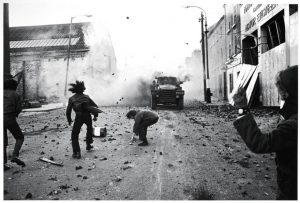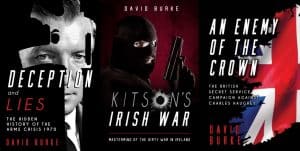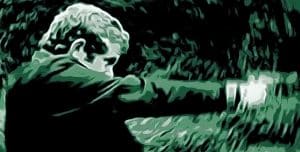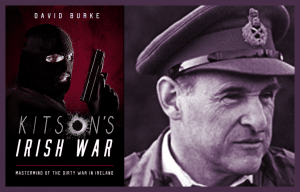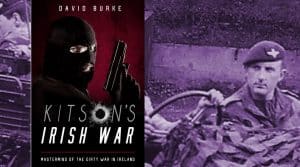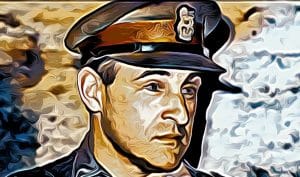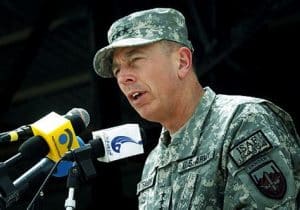By David Burke, author of ‘Kitson’s Irish War: Mastermind of the Dirty War in Ireland’.
1. Kitson’s Private Army.
Lance Corporal David Cleary was a member of the elite Support Company of the 1st Parachute Regiment which was commanded by Colonel Derek Wilford. Wilford reported upwards to Brigadier Frank Kitson. All were assigned to 39 Brigade area which operated in Belfast and its environs.
Support Company of 1 Para was known as ‘Kitson’s Private Army’ and was infamous for its brutal behaviour in Belfast.
Kitson reported upwards to General Ford at British Army HQNI at Thiepval Barracks, Lisburn.
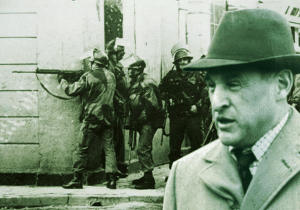
Lance Corporal Cleary was ‘gazetted’ or ‘mentioned in dispatches’ for his “gallant” behaviour during the internment swoops of August 1971. Cleary could not have received that minor honour without the full support of his superiors. Clearly, he was one of the more important soldiers in Kitson’s Private Army.
2. Kitson’s Private Army is sent ‘on loan’ to Derry.
Brigadier Patrick MacLellan of 8 Brigade in Derry also reported to General Ford.
1 Para was sent on loan to Brigadier MacLellan to assist him block a NICRA march from reaching the centre of Derry city on 30 January 1972. The troops of 1 Para were merely meant to man a few barriers and be on standby to conduct a possible snatch and arrest operation if rioting by youths got out of hand.

On the afternoon of 30 January 1972, Cleary perpetrated his infamous murder spree. There are a number of indications that his behaviour was part of a ruthless counter-insurgency strategy formulated in Belfast behind the back of 8 Brigade. The plan was to wipe out the IRA in the Bogside and Creggan and put an end to the ‘no-go’ area that had become known around the world as “Free Derry”.
The official British narrative is that of Lord Saville. His inquiry concluded in 2010 that Cleary and his colleagues span out of control at the same time, disobeyed orders in unison and murdered unarmed civilians as a pack for some utterly inexplicable reason.
3. Military Intelligence and MI5.
A clue as to what happened on Bloody Sunday can be gleaned from the fact British military intelligence and MI5 were in receipt of information that 40 Republican gunmen were going to be present in the vicinity of the Rossville Flats (shown on the map below). The information, however, was fallacious. What is crucial to appreciate is that the spy’s handlers believed the information was true.
On Bloody Sunday the troops of Support Company raced up Rossville Street in a convoy of military personnel carriers (‘pigs’) which fanned out into an attack formation as if to confront a salvo of bullets from IRA gunmen. Instead, they encountered the harmless occupants of a nearby barricade and then proceeded to murder them before killing other unarmed civilians in the vicinity. The overwhelming majority of their victime were male and young. Typical, IRA volunteers were young men.
Cleary was one of the most violent of the killers. He shot a number of people in the back. One of them was lying on the ground. He aimed at his anus so the bullet would travel up and demolish his spine. He blew apart the skull of another man who was walking towards a fallen victim while waving a piece of cloth.
4. Secret Orders.
Aside from two or three Official IRA members who fired a few shots on Bloody Sunday, there were no armed and active Republicans in the Bogside. The Official IRA discharges did not spark the massacre. The Provisional IRA did not take up any arms at all that day. Support Company ended up murdering unarmed civilians, none of whom presented them with any danger.

Shortly before the massacre, Cleary (Soldier F) received a visit from his commander, Colonel Derek Wilford at the yard which the company was using as its temporary HQ beside a church. As Cleary let slip in a statement he made nearly 50 years ago to the Widgery tribunal, the visit was an ‘unusual’ development. For the avoidance of any doubt the word he – Cleary – used in that statement was ‘unusual’. Cleary and his Widgery tribunal minders must have included the reference to Wilford’s visit in the statement as there were multiple witnesses to it. Furthermore, Wilford was scheduled to testify at the Widgery tribunal where he was likely to describe his movements anyway. Cleary, however, did not reveal what orders Wilford gave him during their discussion. Soldier G, another of the Bloody Sunday killers, was present for the meeting.
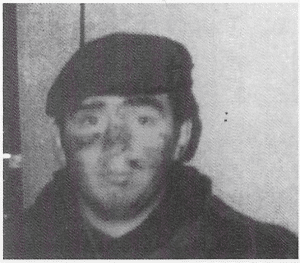
Wilford probably gave them orders – or confirmed earlier instructions – to open fire as soon as they got out of their ‘pig’ at the 40 IRA gunmen the dubious intelligence source has said would be waiting for them.
5. C Company, the fig leaf for the assassins of Support Company.
Wilford had taken C Company and Support Company to Derry. The soldiers of C Company dressed in the type of outfits they wore when arresting rioters in Belfast. Their clothing was light. They were unencumbered by equipment. All of this enabled them to run at speed to catch fleeing rioters. They formed up behind Barrier 14 (which can be seen on the left of the illustration with this article).
MacLellan’s plan was to divert the NICRA march around the corner between William Street and Rossville Street up towards the Rossville Flats.
Officially, C Company was under the command of Brigadier MacLellan of Derry’s 8 Brigade for the day. He had instructed all of the troops of 1 Para to remain on foot and confine their actions to the vicinity of William Street where the rioting was expected to take place.
Unlike Support Company which disregarded most of MacLellan’s orders, C Company paid them some heed.
6. General Ford.

Bloody Sunday would not have happened if C Company and Support Company had not been ordered into action. MacLellan had not wanted to release them but was told so to do by General Ford who was in Derry on Bloody Sunday and was his superior.
The plan to go further than a mere arrest operation and attack the Bogside on Bloody Sunday was most likely concocted by Ford, Kitson and Wilford. The scheme was undoubtedly created behind MacLellan’s back.
7. Why did Soldier F daub his face with war paint if he was merely involved in an arrest operation?

Bloody Sunday took place at approximately 4 o’clock in the afternoon on 30 January 1972. There is no logical explanation for wearing ‘war paint’ camouflage of this nature on a late winter afternoon for a mere arrest operation.
Since a group of them had donned this greasepaint, it is reasonable to assume that they were doing so under orders.
The black and white photographs under this paragraph are of soldiers G, H and J. All of them have black smudges on their faces indicating they expected to be shot at by gunmen. The camouflage serves one purpose during daylight hours: to disguise a white round face. Otherwise, a white, round face presents a highly visible target for snipers and gunmen.

Hence, it is reasonable to infer that Support Company was intended by its commanders to face shots from Republican gunmen. Military intelligence and MI5 had advised that there would be gunmen adjacent to and inside the Rossville Flats. Brigadier MacLellan of 8 Brigade never intended for Support Company to go anywhere near the flat complex. So, whose orders were the paratroopers of Support Company actually following? Those of MacLellan or of Wilford/Ford/Kitson?
8. The use of ‘pigs’ to race into ‘Free Derry’.
MacLellan’s plan was to prevent the NICRA march on Bloody Sunday reaching the centre of Derry City and, if required, arrest some of the rioters. He had issued orders that the soldiers of 1 Para (i.e. C Company and Support Company) were to remain on foot and in the vicinity of the traditional rioting area at William Street.
Support Company was clearly following different orders. In the first instance, they were positioned too far away from the rioting area to have had any hope of catching fleeing rioters on foot. Had they chased after them from a starting point at the yard beside the church where they were located, the fleet footed rioters would have scarpered with ease.
If Support Company had been intended to sweep in behind the rioting crowds on William Street (as they have always claimed), they should have formed up much closer to William Street.
9. All guns blazing.
When Cleary, soldiers E,G,H and their colleagues in Support Company deployed, they did so in vehicles which sped past the riot area towards the Rossville Flats in an attack formation. They alighted from their vehicles in battle dress carrying guns, not arrest batons. Some were carrying radio equipment on their backs. They were soon shooting at young men, including a few at the ‘rubble barricade’ adjacent to the Rossville Flats.
All of the 108 known shots discharged on Bloody Sunday were those of Support Company.
10. Judicial Review
But the IRA was nowhere to be seen.
After the shooting stopped, the lies and smears about the victims began. They were portrayed as gunmen and nail bombers.
Soldier F was charged with murder but the case against him was dropped for an alleged lack of evidence. A judicial review is presently before the courts in Belfast. If it is successful, Cleary will face criminal charges again.
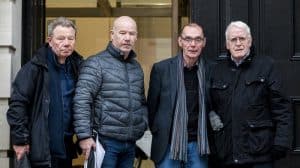
The grounds underpinning the judicial review are compelling: Cleary made a statement to the Widgery tribunal in 1972 to which privilege does not attach. No doubt, if the court in Belfast rules in favour of a resumption of his prosecution, the Ministry of Defence will appeal the action. One way or the other, it will be a long time before the issue is settled.
11. The men who know the truth about Bloody Sunday

There are at least three people alive who know what really happened on Bloody Sunday. They include Brigadier Frank Kitson who lives in England. Colonel Derek Wilford who cowers in Belgium (having thrown Cleary to the wolves) and, of course, Cleary himself.
If Cleary ends up facing a criminal prosecution which could result in him spending the rest of his life in prison, he might just crack and tell the truth about the orders he followed during Bloody Sunday. Kitson and Wilford might then face criminal charges themselves. Cleary might yet provide honest answers – for a change – to many of the questions he was asked at the Saville Inquiry. In addition, he might also reveal:
- Why he and his colleagues daubed themselves with war paint if they were merely on an arrest mission;
- Why Support Company dressed differently to C Company;
- What Wilford said to him during his visit to Support Company’s temporary HQ in Derry on Bloody Sunday;
- Whether Wilford told him that he was in receipt of orders from General Ford at any stage which entitled Support Company to disregard the orders of Brigadier MacLellan;
- Was he told about the intelligence from the spy in Derry that 40 gunmen would be prsent in the Bogside;
- Whether he was he ordered to shoot to kill anyone who looked like he might be a Republican;
- Whether there was a plan to shoot at civilians to flush the IRA out onto the streets to protect the citizens of ‘Free Derry’.
- Whether he has blackmailed the Ministry of Defence into supporting him lest he otherwise reveal the secrets he possesses about Bloody Sunday.
If the judicial review is successful, it is still possible that Boris Johnson’s proposed amnesty legislation will let him evade justice.
David Burke is the author of ‘Deception & Lies, the Hidden History of the Arms Crisis 1970’ and ‘Kitson’s Irish War, Mastermind of the Dirty War in Ireland’ which examines the role of counter-insurgency dirty tricks in Northern Ireland in the early 1970s. His new book, ‘An Enemy of the Crown, the British Secret Service Campaign against Charles Haughey’, was published on 30 September 2022. These books can be purchased here:
https://www.mercierpress.ie/irish-books/kitson-s-irish-war/
https://www.mercierpress.ie/irish-books/an-enemy-of-the-crown/
https://www.mercierpress.ie/irish-books/deception-and-lies/
OTHER STORIES ABOUT BLOODY SUNDAY, THE BALLYMURPHY MASSACRE, BRIGADIER FRANK KITSON AND COLONEL DEREK WILFORD ON THIS WEBSITE:
The covert plan to smash the IRA in Derry on Bloody Sunday by David Burke
Soldier F’s Bloody Sunday secrets. David Cleary knows enough to blackmail the British government.
Colin Wallace: Bloody Sunday, a very personal perspective
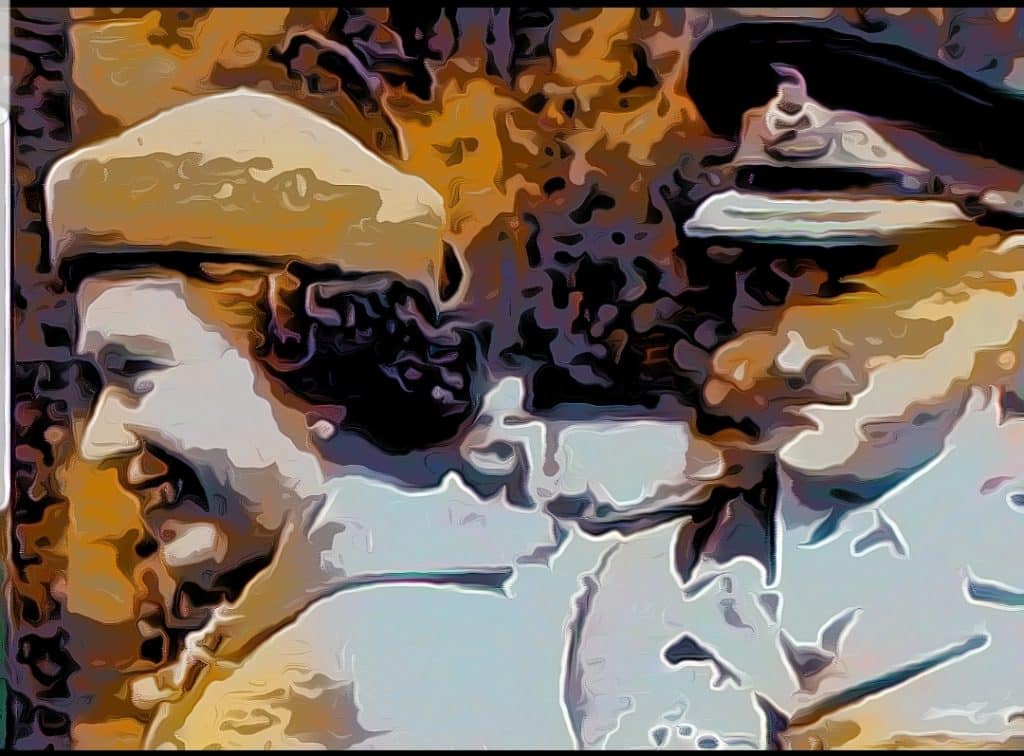
A Foul Unfinished Business. The shortcomings of, and plots against, Saville’s Bloody Sunday Inquiry.
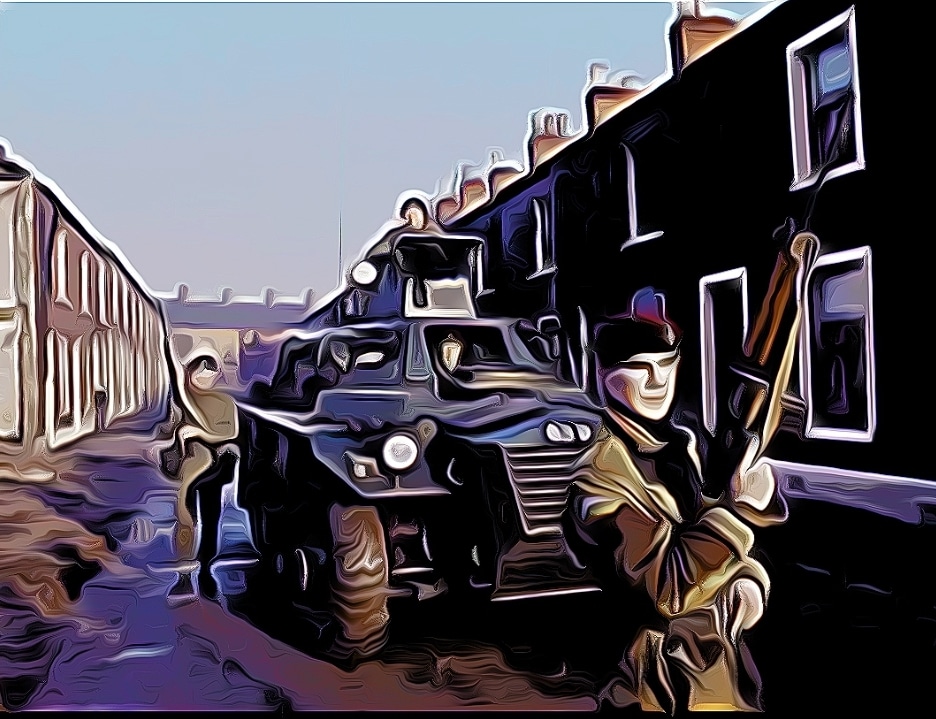

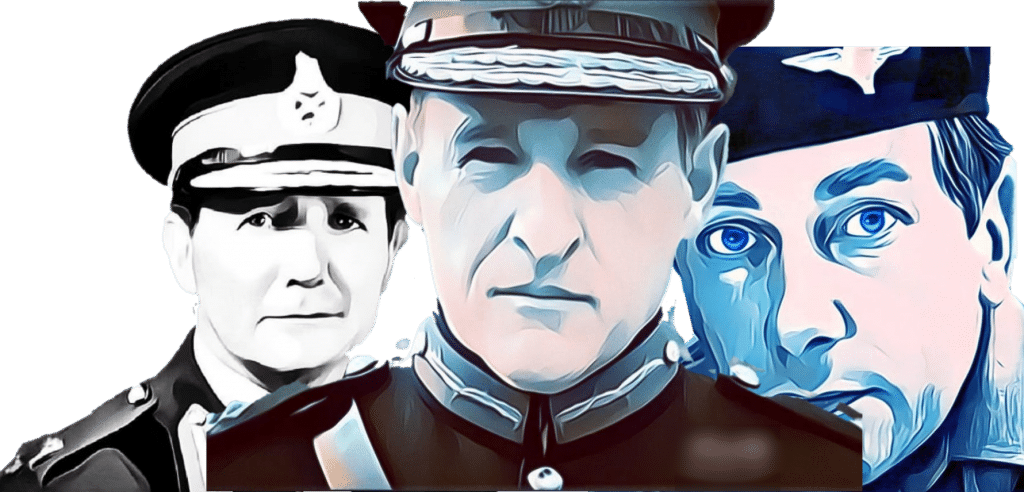
Soldier F, the heartless Bloody Sunday killer, is named.
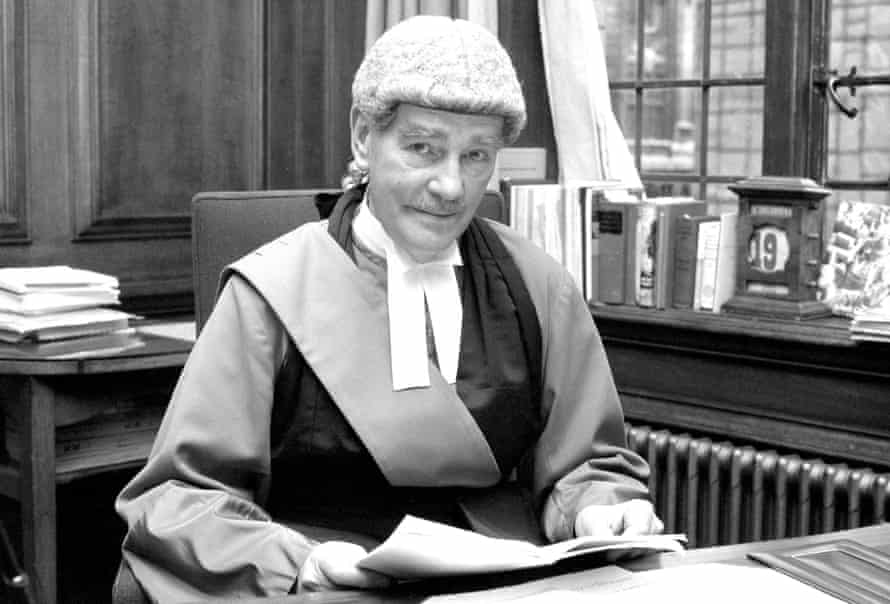
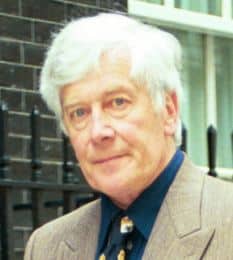

Brigadier Kitson’s motive for murdering unarmed civilians in Ballymurphy.


